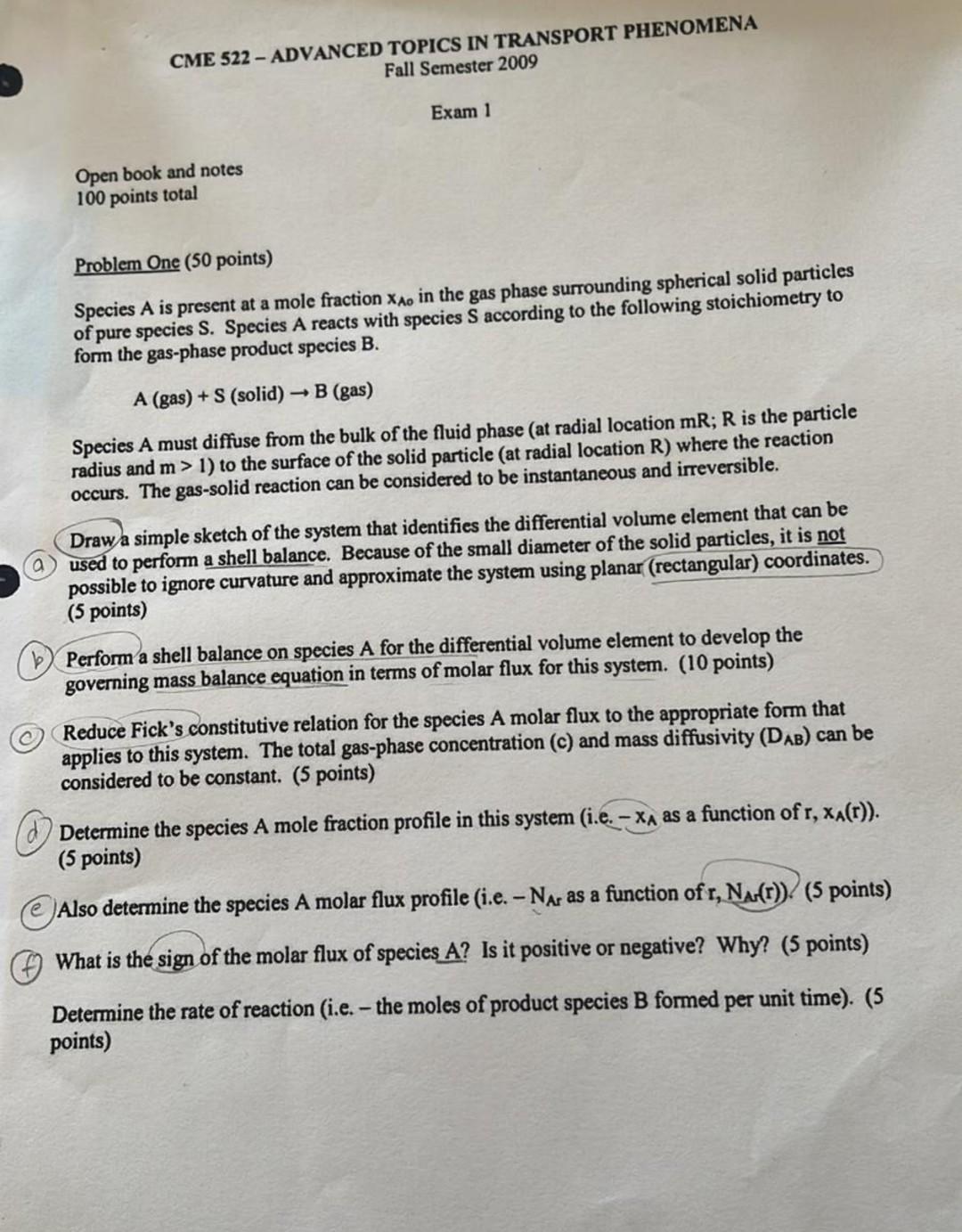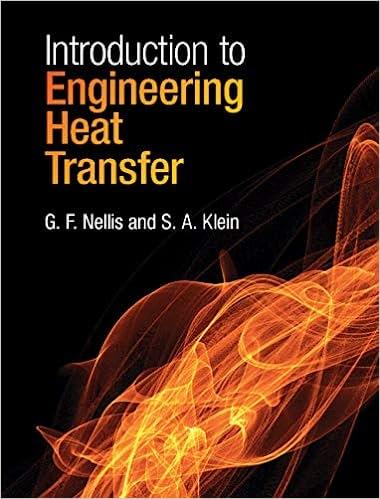Answered step by step
Verified Expert Solution
Question
1 Approved Answer
please I need it asap its transport phenomenon question CME 522 - ADVANCED TOPICS IN TRANSPORT PHENOMENA Fall Semester 2009 Exam 1 Open book and

please I need it asap its transport phenomenon question
CME 522 - ADVANCED TOPICS IN TRANSPORT PHENOMENA Fall Semester 2009 Exam 1 Open book and notes 100 points total Problem One (50 points) Species A is present at a mole fraction xA0 in the gas phase surrounding spherical solid particles of pure species S. Species A reacts with species S according to the following stoichiometry to form the gas-phase product species B. A(gas)+S(solid)B(gas) Species A must diffuse from the bulk of the fluid phase (at radial location mR;R is the particle radius and m>1 ) to the surface of the solid particle (at radial location R ) where the reaction occurs. The gas-solid reaction can be considered to be instantaneous and irreversible. Draw a simple sketch of the system that identifies the differential volume element that can be (a) used to perform a shell balance. Because of the small diameter of the solid particles, it is not possible to ignore curvature and approximate the system using planar (rectangular) coordinates. (5 points) b) Perform a shell balance on species A for the differential volume element to develop the governing mass balance equation in terms of molar flux for this system. (10 points) Reduce Fick's constitutive relation for the species A molar flux to the appropriate form that applies to this system. The total gas-phase concentration (c) and mass diffusivity (DAB) can be considered to be constant. (5 points) d) Determine the species A mole fraction profile in this system (i.e. xA as a function of r,xA(r) ). (5 points) (e) Also determine the species A molar flux profile (i.e. NAr as a function of r,NA(r) ). (5 points) (7) What is the sign of the molar flux of species A ? Is it positive or negative? Why? (5 points) Determine the rate of reaction (i.e. - the moles of product species B formed per unit time). (5 points)Step by Step Solution
There are 3 Steps involved in it
Step: 1

Get Instant Access to Expert-Tailored Solutions
See step-by-step solutions with expert insights and AI powered tools for academic success
Step: 2

Step: 3

Ace Your Homework with AI
Get the answers you need in no time with our AI-driven, step-by-step assistance
Get Started


